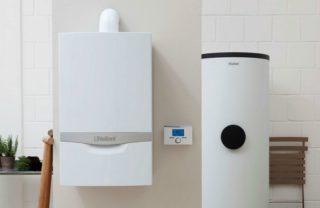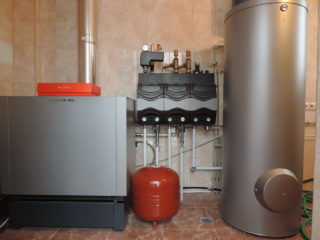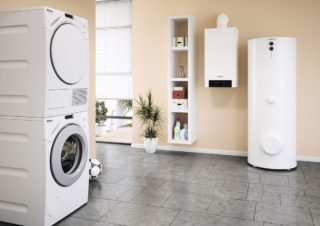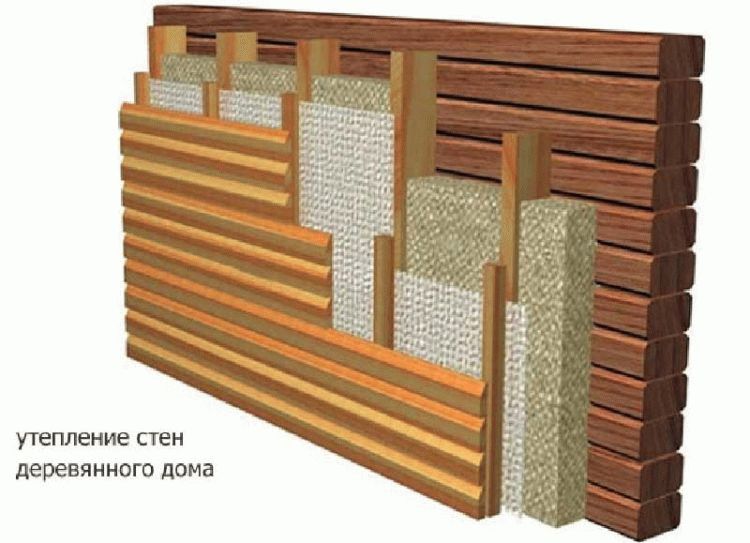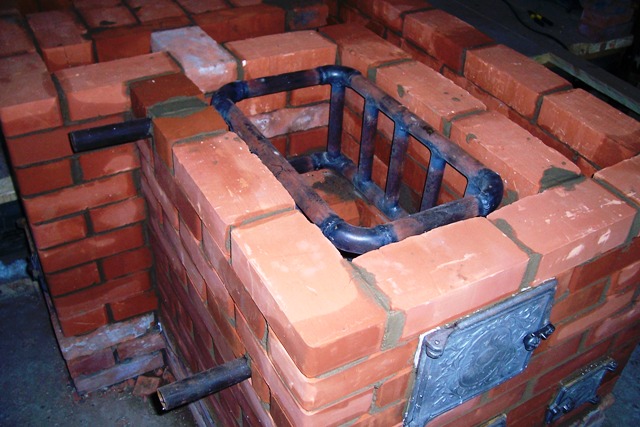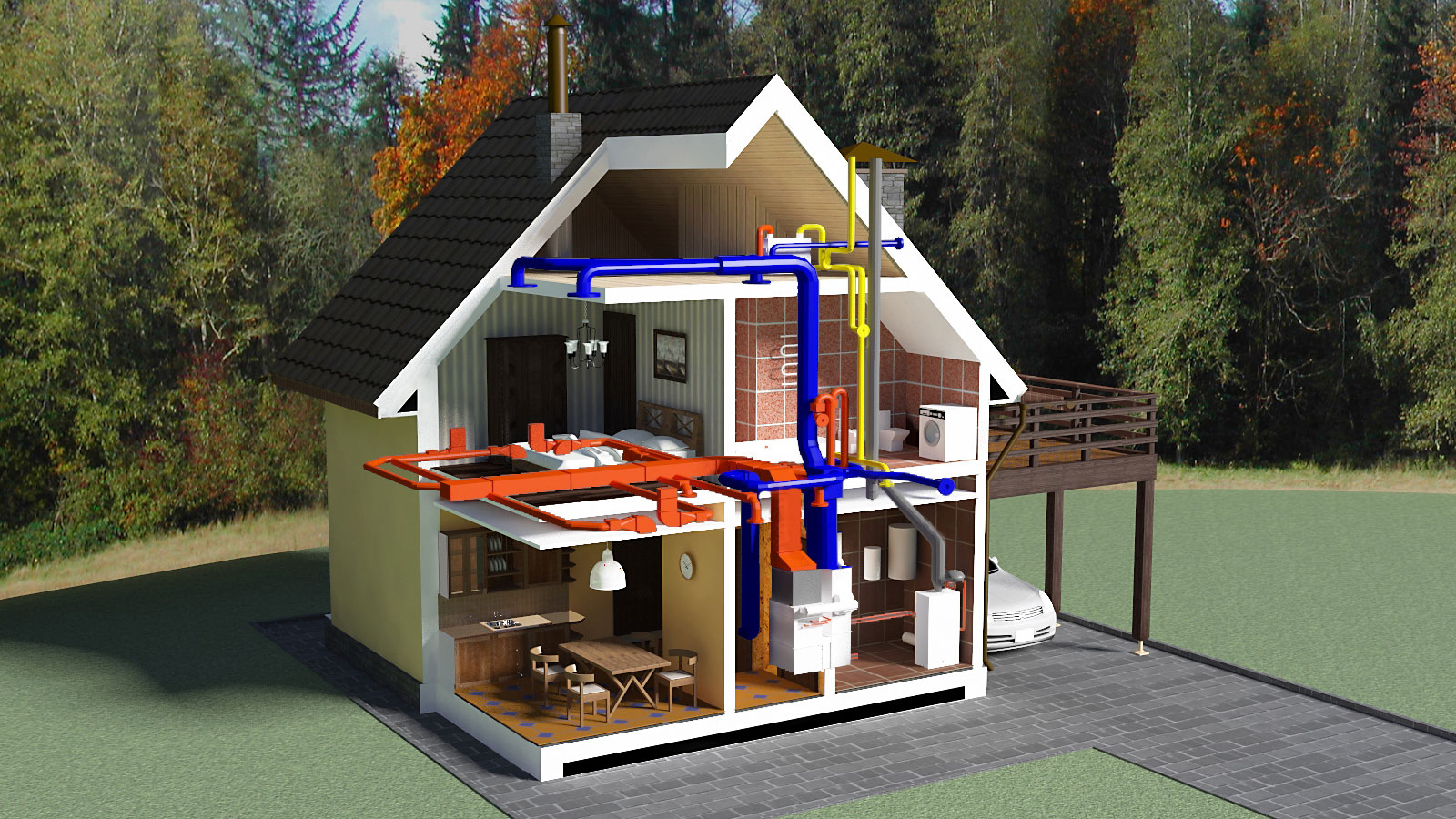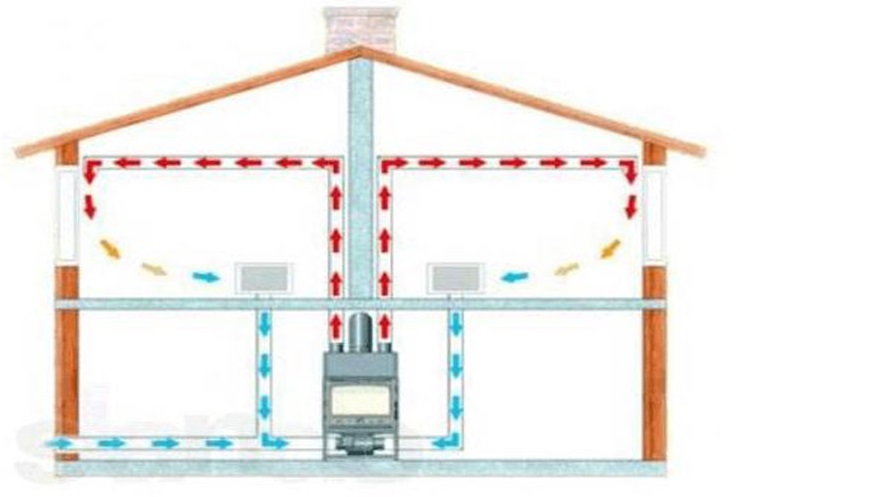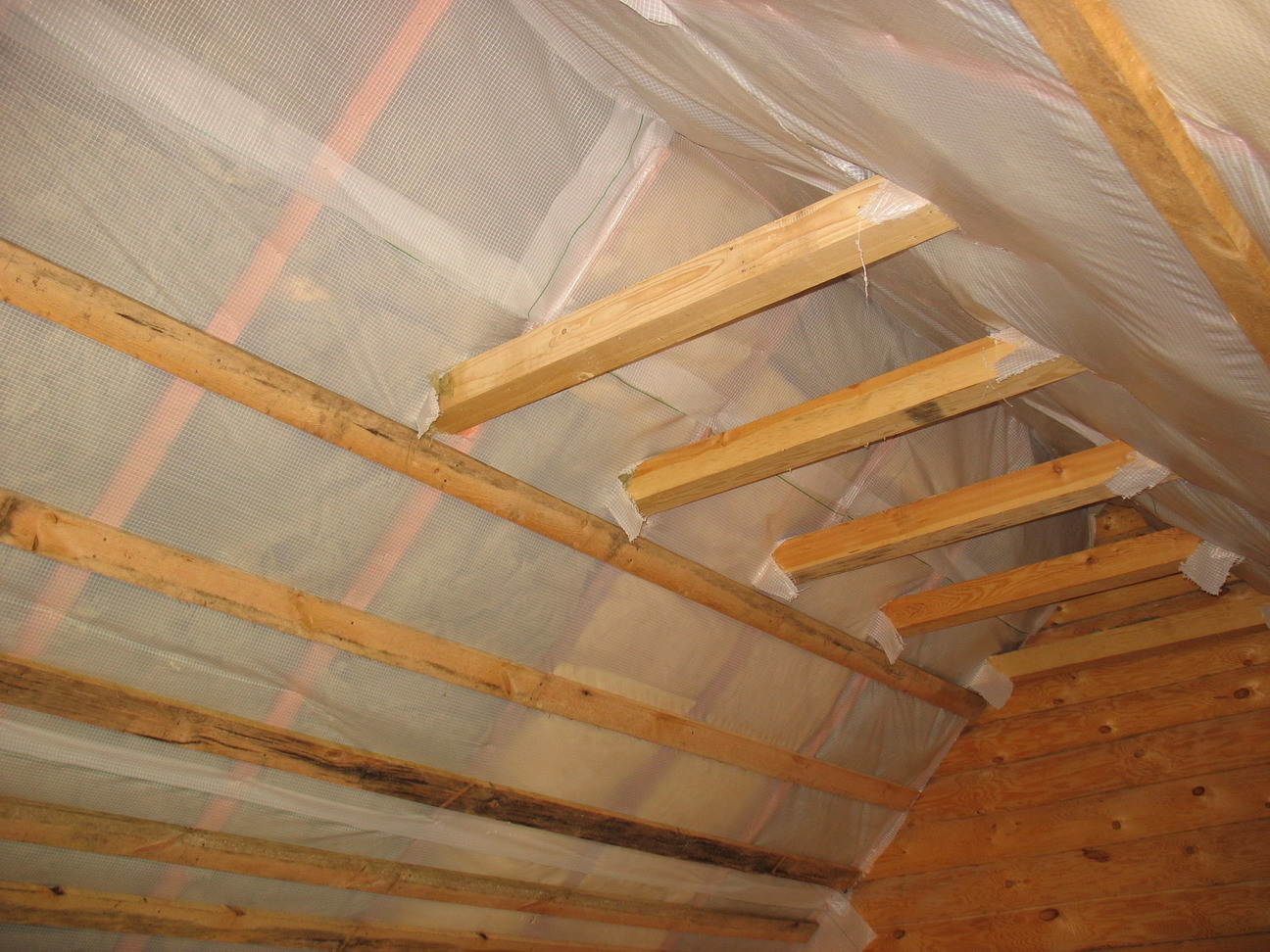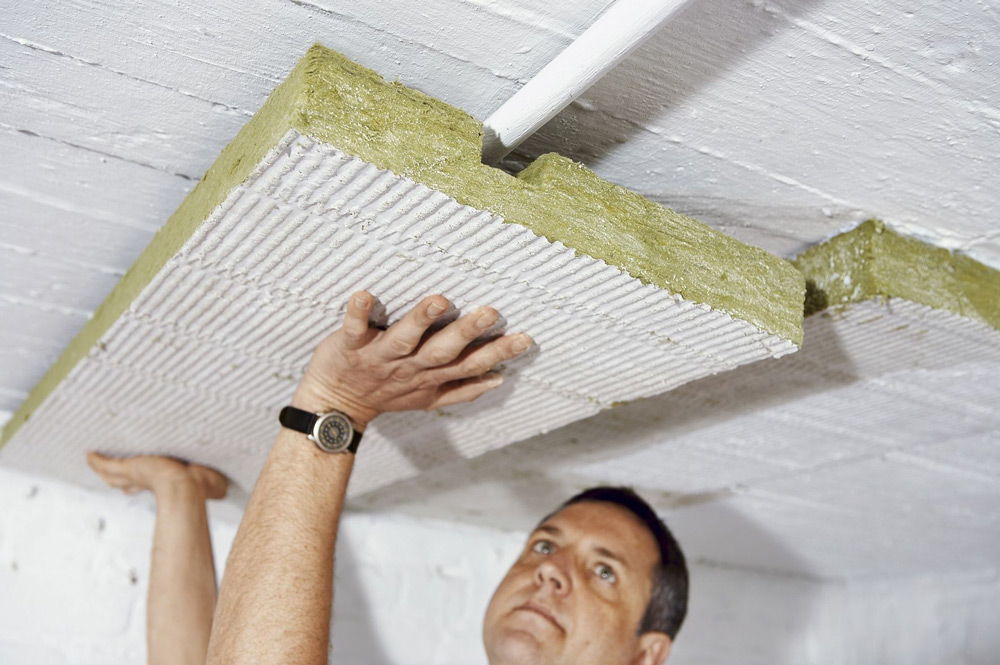In this article, we will analyze the issues related to heating a house by the property of the people, blue fuel. After reading the article to the end, you will decide for yourself whether to be heated with gas or not. Having made a decision in favor of gas equipment, we will help you step by step to determine the choice of equipment.
Pros and cons of heating with gas boilers
- The low cost of a kilowatt of heat energy, a communal apartment for payment on the meter does not greatly upset the owners of houses (when it comes to main gas).
- High efficiency over 90% according to the boiler passport.
- Simple operation (no need for weekly maintenance when compared to solid fuel boilers).
- High boiler power over 30 kW (when compared with electric heating, the maximum power allocated to the house is 15 kW at 380 V).
The main disadvantages gas heating are:
- Difficulties in obtaining permits for connecting a house to the gas main.
- You will have to pay a rather large sum for a tie-in into a gas main (for example, they counted 2,150,000 for connection to the GORGAZ, 200 meters to the main, a house in the Moscow region).
- Explosion hazard of gas (if the installation is not carried out in compliance with the standards, if the equipment is used incorrectly).
The contract for the maintenance of gas equipment, according to the new law, is concluded with the owners of houses who use a gas boiler for heating the house (Resolution of the Government of the Russian Federation No. 410 was adopted on May 14, 2013, if the owner refuses to conclude an agreement, servicing organizations have the right to stop supplying gas to a house or apartment You will not scare our person with the possibility of stopping the supply, therefore, a new law was adopted on December 5, 2016, now the owner of the real estate will be fined for the absence of a contract. Maintenance costs money, which will be an additional blow to the owner's wallet in addition to the cost of gas.
What gas to heat the house
- Main gas-methane... If a yellow pipe is connected to the house from the central gas pipeline.
- Liquefied petroleum gas (LPG) the most common type is a mixture of propane and butane.
Heating a house with liquefied gas requires taking into account a number of features:
- To convert the gas boiler to a propane-butane mixture, the gas supply nozzles to the boiler combustion chamber are changed. The gas pressure in the boiler is adjusted according to the draft gauge.
- Installed in the yard, underground, a gas tank for gas. We recommend taking a larger volume, for example, not 2.5 cubes, but 3.5 cubes. The difference in price between the two gasholders is small, but by installing a gasholder of a larger volume, you will get the following advantages. The gas will not run out in the middle of winter and you will not have to quickly look for someone who will come and fill the gas tank in the cold. We recommend filling the large gas tank in the spring at the beginning of the season when LPG prices are minimal. Another option for storing LPG is a "mobile gas tank". It is a cylinder with a volume of 600 liters on a car trailer; according to the legislation, it is allowed to tow up to 600 liters of LPG on public roads without permits.
- If the heated area is up to 100 square meters, then gas cylinders are used by connecting them to the boiler through a ramp. Composite cylinders are a good alternative to traditional, red colored steel cylinders. Composite cylinders are made in Europe.They are much lighter than their metal counterparts and are safer to use, thanks to the plastic housing and the built-in emergency pressure relief valve.
Choosing a gas boiler
Next, you can determine which version of the boiler is right for you, floor-standing or wall-mounted. It is advisable to install floor-standing boilers if the heat loss at home and the loss for the preparation of hot water are more than 30 kW. The heat exchangers of the floor-standing boiler are made of cast iron, which works longer than the heat exchanger of the wall-mounted boiler. The service life of a floor-standing boiler is 20 years or more. For a floor-standing boiler, due to its heavy weight, a foundation is required. The cast iron from which the heat exchanger is made is a brittle material and does not like temperature differences between the direct and return water supply to the boiler. To protect the heat exchanger from destruction during temperature drops, it is necessary to put a hydraulic arrow after the boiler.
If the boiler power is less than 30 kW, then choose a wall-mounted boiler.
When choosing a wall-mounted boiler, we decide what type of heating will be in the house: mainly floor or radiator. If you have chosen floor standing, we recommend paying attention to condensing boilers. Compared to conventional ones, the efficiency is higher due to the use of heat from the flue gases. The condensing boiler is optimal for working with low temperature heating systems, such as underfloor heating. But the boiler has a significant drawback, it is the disposal of the acid generated during the operation of the boiler, which cannot be drained directly into the sewer.
Also, when choosing a wall-mounted boiler, it is necessary to decide which boiler to take with an open or closed combustion chamber. For a closed combustion chamber, a coaxial chimney is required, which is easy to install, it is enough to make a hole in the wall with a crown and bring the chimney out into the street. For a boiler with an open chamber, it is necessary to connect a natural draft chimney with a pipe outlet to the roof, plus a sufficient amount of air must enter the boiler room to maintain normal combustion.

